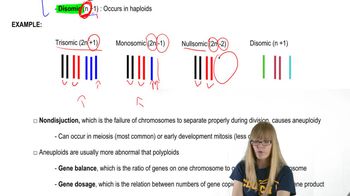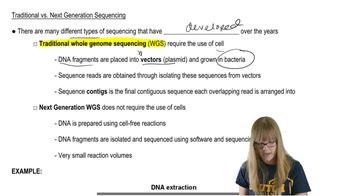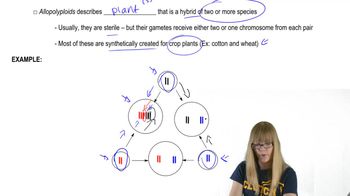Here are the essential concepts you must grasp in order to answer the question correctly.
Aneuploidy vs. Euploidy
Aneuploidy refers to an abnormal number of chromosomes in a cell, resulting from nondisjunction during meiosis or mitosis, leading to conditions like Down syndrome. In contrast, euploidy is the normal state of having a complete set of chromosomes, which can be haploid (one set) or diploid (two sets), and is essential for normal development and function.
Recommended video:
Monosomy vs. Trisomy
Monosomy is a type of aneuploidy where one chromosome from a pair is missing, resulting in a total of 45 chromosomes, as seen in Turner syndrome. Trisomy, on the other hand, occurs when there is an extra chromosome in a pair, leading to 47 chromosomes, exemplified by conditions like Down syndrome (Trisomy 21).
Recommended video:
Autopolyploidy vs. Allopolyploidy
Autopolyploidy is the condition where an organism has more than two sets of chromosomes derived from a single species, often resulting from errors in meiosis. Allopolyploidy involves the combination of chromosome sets from different species, leading to hybrid organisms that can be fertile, such as many cultivated plants, which can enhance genetic diversity.
Recommended video:
 Verified step by step guidance
Verified step by step guidance Verified video answer for a similar problem:
Verified video answer for a similar problem:



 4:38m
4:38m